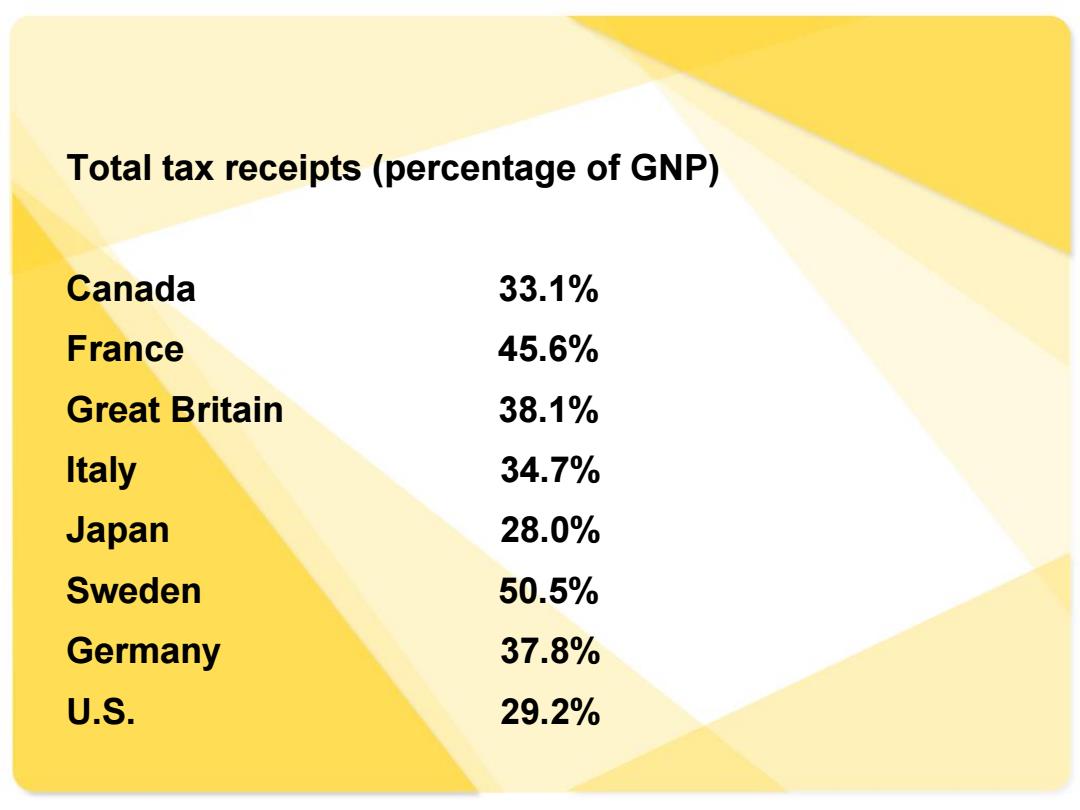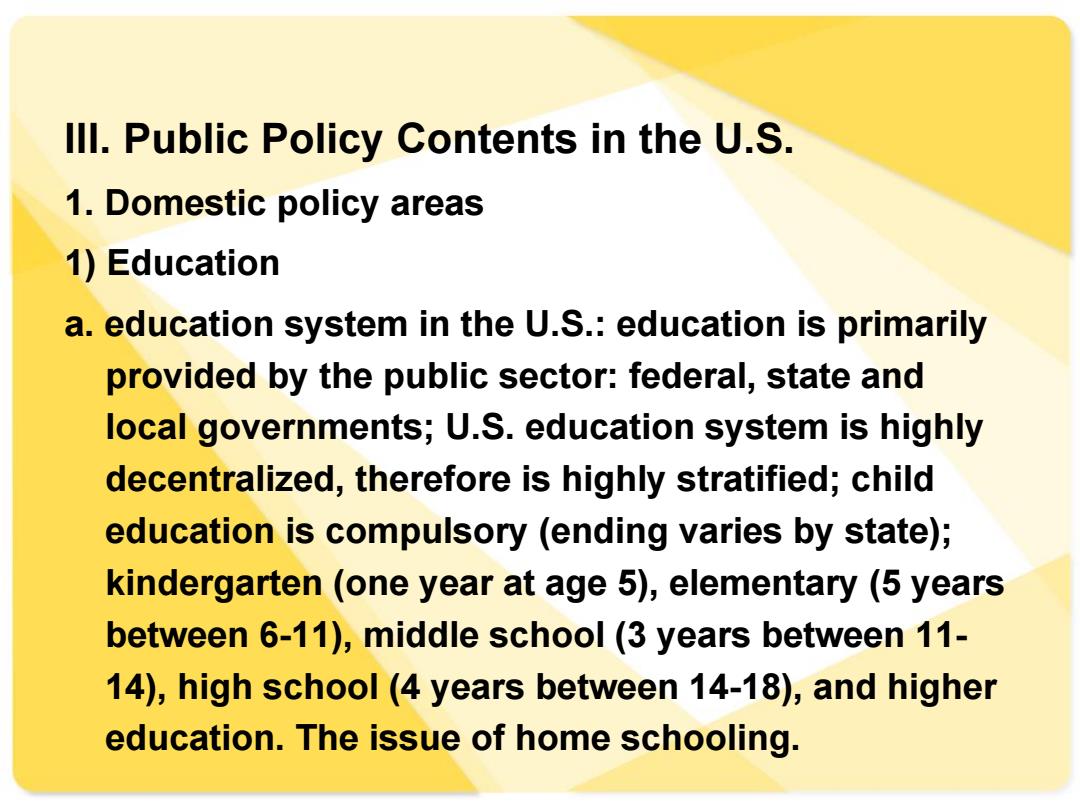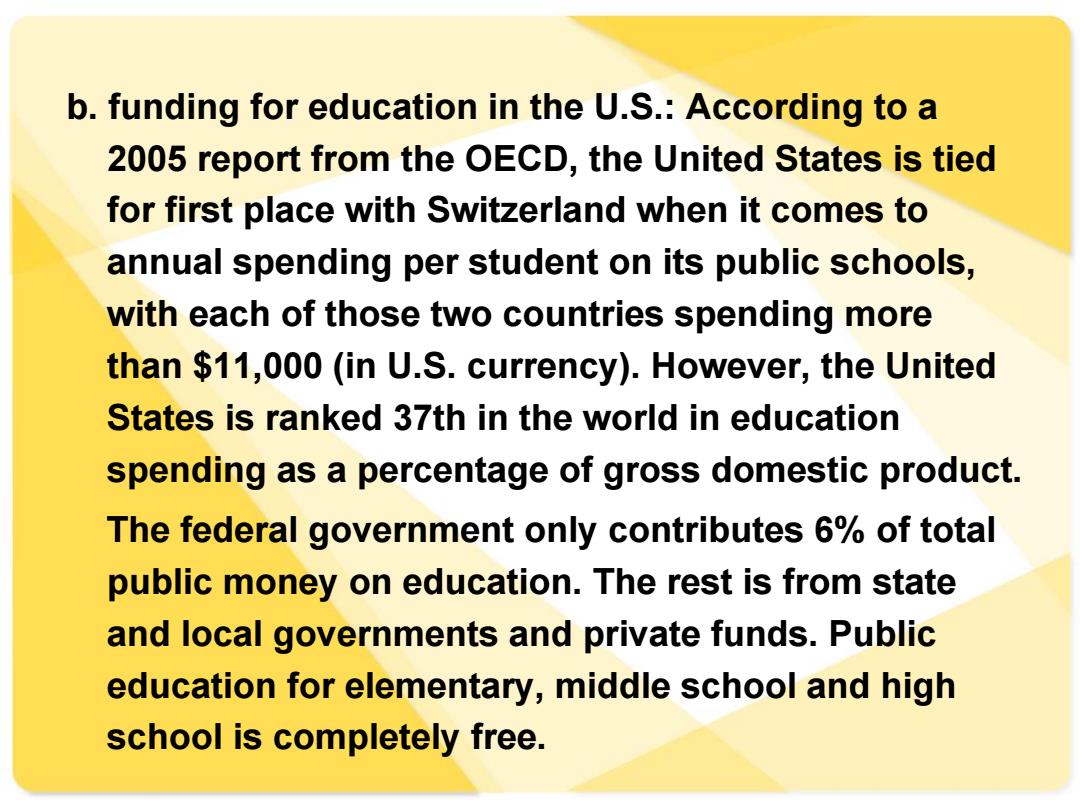
Total tax receipts(percentage of GNP) Canada 33.1% France 45.6% Great Britain 38.1% Italy 34.7% Japan 28.0% Sweden 50.5% Germany 37.8% U.S. 29.2%
Total tax receipts (percentage of GNP) Canada 33.1% France 45.6% Great Britain 38.1% Italy 34.7% Japan 28.0% Sweden 50.5% Germany 37.8% U.S. 29.2%

Ill.Public Policy Contents in the U.S. 1.Domestic policy areas 1)Education a.education system in the U.S.:education is primarily provided by the public sector:federal,state and local governments;U.S.education system is highly decentralized,therefore is highly stratified;child education is compulsory (ending varies by state); kindergarten (one year at age 5),elementary (5 years between 6-11),middle school (3 years between 11- 14),high school (4 years between 14-18),and higher education.The issue of home schooling
III. Public Policy Contents in the U.S. 1. Domestic policy areas 1) Education a. education system in the U.S.: education is primarily provided by the public sector: federal, state and local governments; U.S. education system is highly decentralized, therefore is highly stratified; child education is compulsory (ending varies by state); kindergarten (one year at age 5), elementary (5 years between 6-11), middle school (3 years between 11- 14), high school (4 years between 14-18), and higher education. The issue of home schooling

b.funding for education in the U.S.:According to a 2005 report from the OECD,the United States is tied for first place with Switzerland when it comes to annual spending per student on its public schools, with each of those two countries spending more than $11,000(in U.S.currency).However,the United States is ranked 37th in the world in education spending as a percentage of gross domestic product. The federal government only contributes 6%of total public money on education.The rest is from state and local governments and private funds.Public education for elementary,middle school and high school is completely free
b. funding for education in the U.S.: According to a 2005 report from the OECD, the United States is tied for first place with Switzerland when it comes to annual spending per student on its public schools, with each of those two countries spending more than $11,000 (in U.S. currency). However, the United States is ranked 37th in the world in education spending as a percentage of gross domestic product. The federal government only contributes 6% of total public money on education. The rest is from state and local governments and private funds. Public education for elementary, middle school and high school is completely free